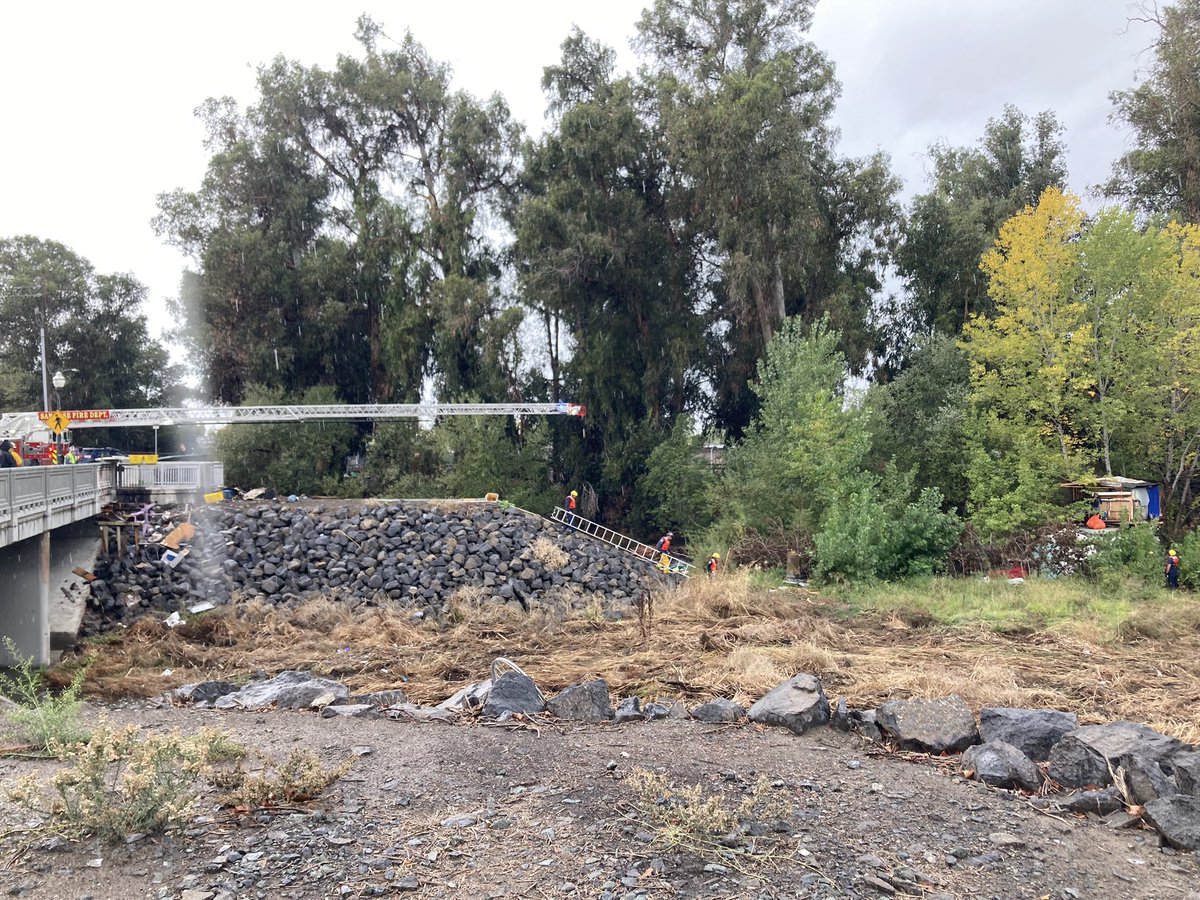

On July 9, 2005, the fossilized bones of a juvenile Columbian mammoth were discovered by San Jose resident, Roger Castillo, in the Lower Guadalupe River near the Trimble Road overcrossing. Its main tributary was known as Arroyo Seco de Guadalupe on 1860 maps and then as Arroyo Seco de Los Capitancillos on the 1876 Thompson & West maps. Historically the Guadalupe River was even shorter, originating several miles further north, at the downstream end of a large willow swamp that is now Willow Glen. Today Santa Clara Mission is 2 miles (3.2 km) away from the original location. Both had to be moved away from the river because of mosquitoes in the summertime and flooding during the winter. In 1777, the original Mission Santa Clara de Thamien and el Pueblo de San José de Guadalupe were established on the banks of Mission Creek, un tiro de escopeta (a musket shot away) from its confluence with the Guadalupe River.

The historic de Anza Expedition explored much of Santa Clara County, traversing western areas en route from Monterey to San Francisco, and traveling around the south end of San Francisco Bay and thence through the eastern portions of the county on the return trip after exploration of parts of the East Bay. Specifically, Juan Bautista de Anza camped along the banks of the Guadalupe River at Expedition Camp 97 on Manear the present-day site of Agnews State Hospital (Santa Clara County, 2001). The Guadalupe River was named by the Juan Bautista de Anza Expedition on March 30, 1776, Río de Nuestra Señora de Guadalupe, in honor of the Virgin of Guadalupe, the principal patron saint of the expedition. Two of the Guadalupe River's major tributaries, Los Gatos Creek and Guadalupe Creek have their sources in the Sierra Azul Open Space Preserve on the western and eastern flanks of the Sierra Azul. The Guadalupe watershed carries precipitation from the slopes of Loma Prieta and Mount Umunhum, the two major peaks of the Sierra Azul, the historical Spanish name ("Blue Mountains") for that half of the Santa Cruz Mountains south of California Highway 17. The river's Los Alamitos and Guadalupe Creek tributaries are, in turn, fed by smaller streams flowing from Almaden Quicksilver County Park, home to former mercury mines dating back to when the area was governed by Mexico. Much of the river is surrounded by parks. river with a Chinook salmon run (see Habitat and Wildlife section below). The Guadalupe River is the southernmost major U.S. The Guadalupe River serves as the eastern boundary of the City of Santa Clara and the western boundary of Alviso, and after coursing through San José, it empties into south San Francisco Bay at the Alviso Slough. From here it flows north through San Jose, where it receives Los Gatos Creek, a major tributary. The river mainstem now begins on the Santa Clara Valley floor when Los Alamitos Creek exits Lake Almaden and joins Guadalupe Creek just downstream of Coleman Road in San Jose, California. Due to the groundwater and surface water interactions in the basin, overpumping has led to reduced base flows in the Guadalupe River and its tributaries.The Guadalupe River ( Spanish: Río Guadalupe Muwekma Ohlone: Thámien Rúmmey) mainstem is an urban, northward flowing 14 miles (23 km) river in California whose much longer headwater creeks originate in the Santa Cruz Mountains. In the past, irrigators, cities in the basin (such as New Braunfels and San Marcos), and cities outside the basin (San Antonio) have relied on groundwater from these aquifers. Other streams within the basin include the Blanco, Comal, and San Marcos rivers and Sandies and Coleto creeks.Ī major concern in the Guadalupe River Basin is overpumping of the underlying aquifers. From the confluence of its North and South forks in Kerr County, the Guadalupe River flows to San Antonio Bay, which drains to the Gulf of Mexico. The basin's namesake river was named Nuestra Señora de Guadalupe, "Our Lady of Guadalupe," by early Spanish explorers.

The Guadalupe Basin is the fourth largest river basin whose watershed area is entirely within Texas.


 0 kommentar(er)
0 kommentar(er)
